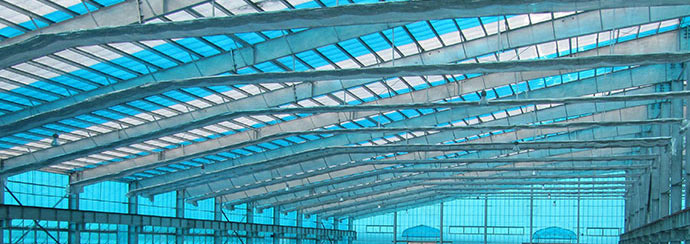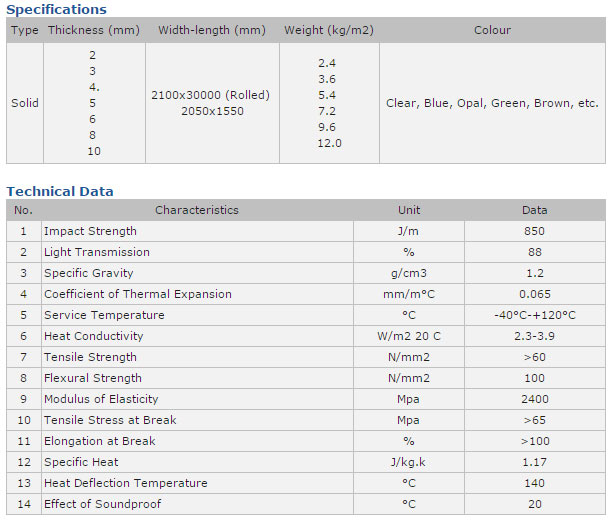REXALON - Polycarbonate Sheets
REXALON the SOLID/COMPACT manufactured polycarbonate sheets use only virgin raw materials.
Impact Strength :
The Impact strength of  solid P.C. sheet is 200 times that of glass.
solid P.C. sheet is 200 times that of glass.
Light Weight :
The weight of  solid P.C. sheet is only about half that of glass and will help in saving of structural costs.
solid P.C. sheet is only about half that of glass and will help in saving of structural costs.
Transparency :
 solid P.C. sheet are crystal clear and the light transmission of clear sheets is about 88%.
solid P.C. sheet are crystal clear and the light transmission of clear sheets is about 88%.
UV-protection :
During the production of  solid P.C. sheets, high density Ultra Violet ray absorbent is co-extruded. The sheets do not decolour or yellow.
solid P.C. sheets, high density Ultra Violet ray absorbent is co-extruded. The sheets do not decolour or yellow.
Resistance to Weather :
 solid P.C. sheet has good weather ability, it can maintain excellent properties in wide temperature range from -40°C to + 120°C.
solid P.C. sheet has good weather ability, it can maintain excellent properties in wide temperature range from -40°C to + 120°C.
Thermal Insulation :
The K-valve of glass is 1.20 times that of  solid P.C. sheet, and hence can prevent heat loss and save more energy.
solid P.C. sheet, and hence can prevent heat loss and save more energy.
Flame Resistance :
 solid P.C. sheet's behavior conform to the standard of difficult - flammability material and is rated class B-1 according to QB8624- 1997.
solid P.C. sheet's behavior conform to the standard of difficult - flammability material and is rated class B-1 according to QB8624- 1997.
How to Install Polycarbonate Sheet?
- First things first: make sure that you have all the correct safety equipments. If working high up it’s best to have a safety harness and a scaffold. Always exercise extreme care when walking on a roof; appropriate footwear is also necessary. Never walk on or apply your weight directly to sheeting.
- Polycarb corrugated sheets need a minimum of a 5 degree fall this ensures adequate water runoff. Purlin Spacing for Corrugated sheets is 800mm for end spans and midspans are 1000. Greca sheets require 900mm for end spans and 1200mm for midspans. If installing under a gutter, use back channel with profiled infill strips.
- When you start installing the sheets the first thing you need to do is find a sticker showing you which side of the sheet faces the sun. It’s imperative that this is followed as there is only one side of the sheet that’s UV protected. The life of the sheet may be shortened and discolouration may occur if the unprotected side is exposed to the sun.
- To start the installation, first lay out the purlin tape over the rafters to prevent expansion noise. Then cut your sheets to size. Sheets can be easily cut with a pair of shears, a fine-toothed handsaw or a circular saw with a cut-off blade suitable for plastic.
- Start with the lower sheets first, keeping the openings where the sheets overlap away from prevailing wind. Allow an overhang of 50mm into the gutter. Overlaps will differ between profiles, corrugated sheets have an overlap of 1 1/2 corrugations and greca profile has just one overlap.
- Polycarb sheets naturally move with temperature, so you will need the correct fixings to allow this to occur without issues. Polycarbonate screws will pre cut a hole wide enough to allow for this expansion. This prevents the sheets from buckling. The large rubber on the screw will also seal on the sheet and stop any water from penetrating the roof. It’s important your fixings need to go through the crest of the corrugations on your sheet. You should use a (5/16”) Drill hex driver.
- The frequency of screws required for corrugated and greca sheets is every 2nd crest for end purlins, every 3rd crest on the mid purlins and on Trimdek sheets use a screw on every crest. If you’re in a high wind area fix corrugated and greca sheets on every second corrugation on each purlin/ batten
- It’s best to tighten the fixings enough to prevent rattling. However you need to be aware that over tightening may cause distortion and excessive stress with possible failure in the sheets the result. Please also only use the correct branded fixings as recommended by the manufacturer, as these are designed to be compatible with that brand of Polycarbonate Roofing.
- Once you have successfully installed all of your roof sheets you will need to finish off the structure with suitable metalgoods such as a ridge cap and barge caps. These will all fit over the top of your sheets and prevent air and water from penetrating your structure.
- Polycarbonate Compact/Multiwall sheet should be installed with a minimum slope of 10 degrees floating on the frame with edges held by special top and bottom aluminium or polycarbonate H and C sections, EPDM beading and sealed with polycarbonate compatible silicon. This allows proper thermal expansion of the sheets.
- Polycarbonate Compact/Multiwall sheets should not be fixed directly to the steel frame using self-drilling screws as this will result in buckling of the sheets during summer season. Also, cracks are likely to appear at these screw holding points due to the lack of expansion gap.
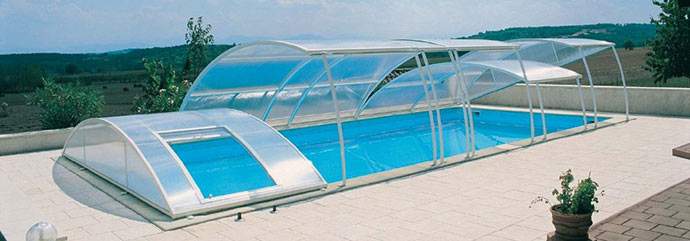

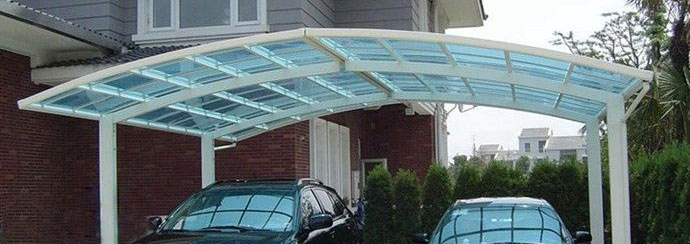
 solid P.C. sheet is 200 times that of glass.
solid P.C. sheet is 200 times that of glass.
 solid P.C. sheet is only about half that of glass and will help in saving of structural costs.
solid P.C. sheet is only about half that of glass and will help in saving of structural costs.
 solid P.C. sheet are crystal clear and the light transmission of clear sheets is about 88%.
solid P.C. sheet are crystal clear and the light transmission of clear sheets is about 88%.
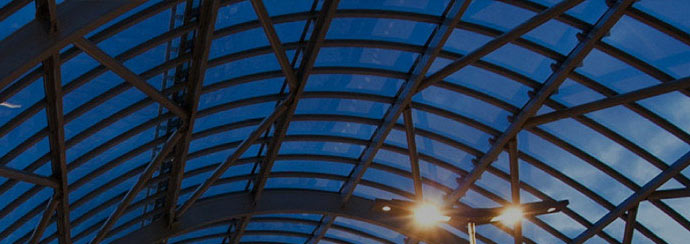

 solid P.C. sheets, high density Ultra Violet ray absorbent is co-extruded. The sheets do not decolour or yellow.
solid P.C. sheets, high density Ultra Violet ray absorbent is co-extruded. The sheets do not decolour or yellow.
 solid P.C. sheet has good weather ability, it can maintain excellent properties in wide temperature range from -40°C to + 120°C.
solid P.C. sheet has good weather ability, it can maintain excellent properties in wide temperature range from -40°C to + 120°C.
 solid P.C. sheet, and hence can prevent heat loss and save more energy.
solid P.C. sheet, and hence can prevent heat loss and save more energy.
 solid P.C. sheet's behavior conform to the standard of difficult - flammability material and is rated class B-1 according to QB8624- 1997.
solid P.C. sheet's behavior conform to the standard of difficult - flammability material and is rated class B-1 according to QB8624- 1997.
